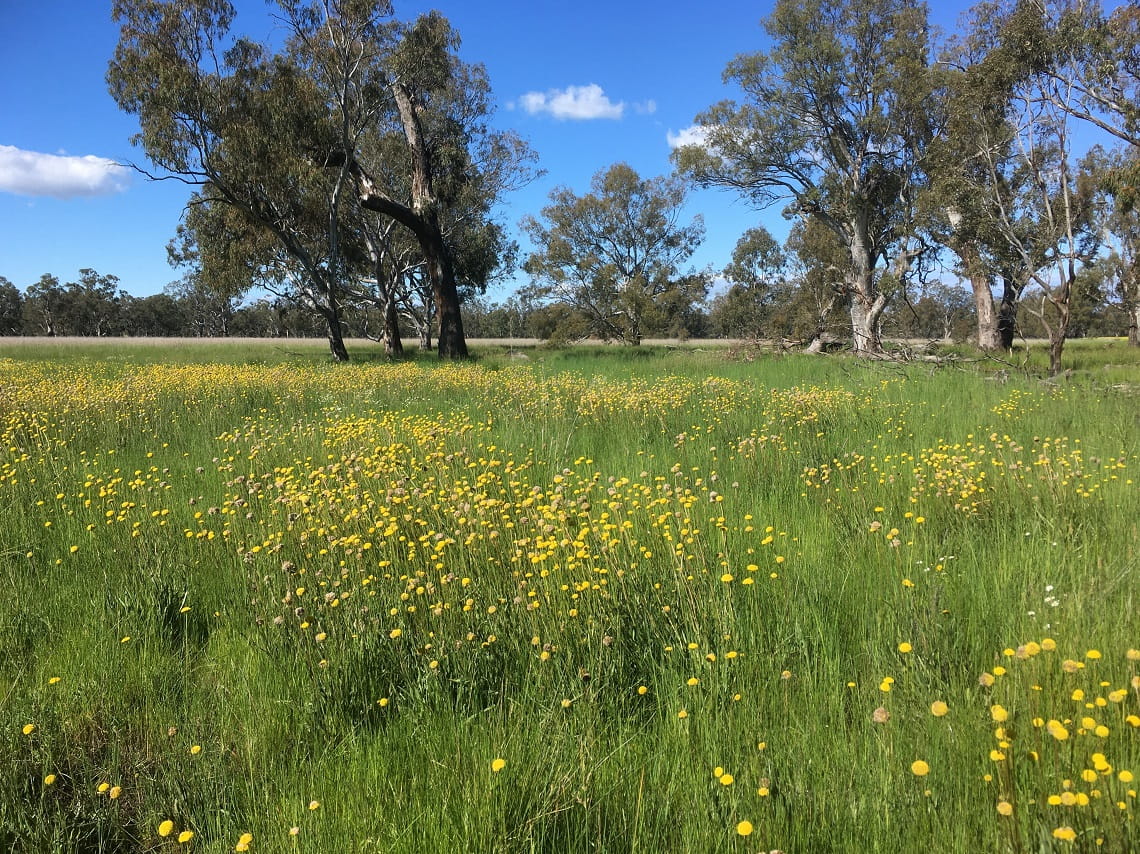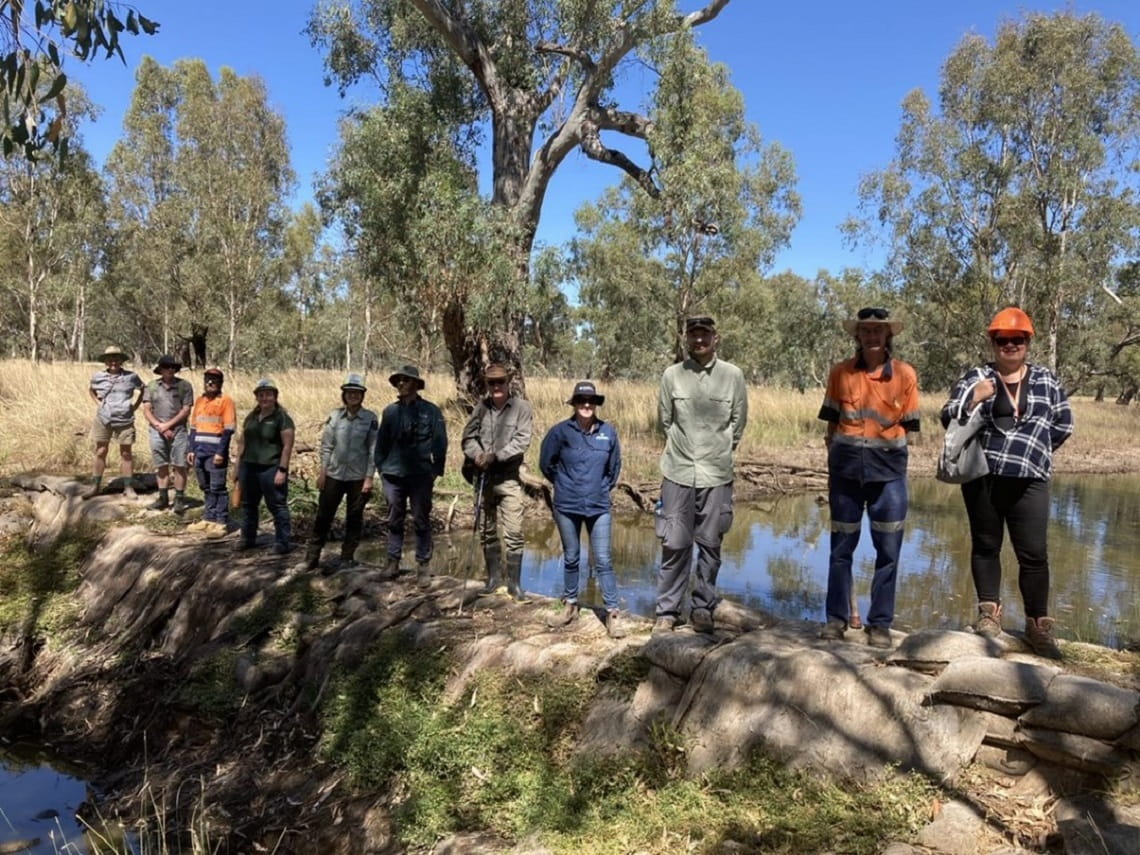
Billy Buttons (Pycnosorus) flowering at Rowan Swamp. Photo credit: Sally Mann
"What are you doing in my swamp?!" asked the wildlife, probably, when Parks Victoria began building an experimental sandbag structure at Rowan Swamp Wildlife Reserve.
The large, shallow wetland about 40km north of Benalla on Yorta Yorta Country is getting its happily ever after, one year on from a successful restoration. And while no ogres or donkeys have been spotted there yet, experts say the swamp is seeing ongoing biodiversity improvement.
Rowan Swamp is connected to Boosey Creek, but the soil separating the swamp and the creek in the downstream end had eroded away. As a result, the swamp was no longer holding water – it was draining as quickly as it filled. Despite other parts of the reserve being healthy, Rowan Swamp had very little wetland vegetation and was covered in weeds.
In mid-2022, Parks Victoria contracted Nature Glenelg Trust to design and install a trial sandbag structure to rebuild the natural level of the creek and make the most of natural flooding when it occurs.
The Trust worked with the Yorta Yorta Nation Aboriginal Corporation Woka Walla crew to install sandbags, and lucky timing saw the trial immediately reap the benefits of the 2022 flood event.

The sandbag structure before and after the October flood event. Photo credit: Nature Glenelg Trust
Since then, the swamp has retained water for a longer duration, and only when full overflowed into Boosey Creek, replicating how it naturally flowed decades ago.
Parks Victoria's Program Leader, Kathryn Stanislawski, says the sandbags restored Rowan Swamp, which remained completely flooded from August to February.
"The goal was to see how smaller works could help recreate the swamp's natural water system and restore the site to balance," she said.
"We couldn't be sure what would happen to the weed-covered swamp bed, but the native wetland vegetation reappeared out of nowhere and absolutely flourished! The landscape has changed from almost 100 per cent weed to 100 per cent native vegetation. It's remarkable, we're all so thrilled."
Kathryn believes the "great result" has the potential to be replicated across many other drained wetlands.
 A site visit featuring Parks Victoria, Nature Glenelg Trust, Forest Fire Management Victoria and Friends of the Helmeted Honeyeater celebrated the success of the trial. Photo credit: Parks Victoria
A site visit featuring Parks Victoria, Nature Glenelg Trust, Forest Fire Management Victoria and Friends of the Helmeted Honeyeater celebrated the success of the trial. Photo credit: Parks Victoria
A vital part of Victoria's natural ecosystems, wetlands provide habitat for native animals including fish, frogs and migratory birds. Healthy wetlands help reduce local flooding impacts and improve ground and water quality.
Sally Mann, a local botanist who has protected threatened species at the swamp for many years, observed the invasion of weeds while the swamp was dry.
"With the flooding of the wetland, it's been wonderful to see a range of native plants flourishing, including threatened species such as Floating Swamp Wallaby-Grass (Amphibromus fluitans) and Flat Spike-sedge (Eleocharis plana)," she said.
Many similar landscapes in Northern and Western Victoria have seen native revegetation and increased native animal breeding thanks to inundation from floods.
This project was funded by the Victorian Government's Reducing Bushfire Risk program.






